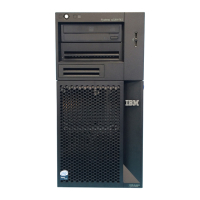Chapter 3. Central processor complex system design 91
The 32 new vector registers have 128 bits. The 139 new instructions include string
operations, vector integer, and vector floating point operations. Each register contains
multiple data elements of a fixed size. The instructions code specifies which data format to
use and the size of the elements:
Byte (sixteen 8-bit operands)
Halfword (eight 16-bit operands)
Word (four 32-bit operands)
Doubleword (two 64- bit operands)
Quadword (one 128-bit operand)
The collection of elements in a register is called a
vector. A single instruction operates on all
of the elements in the register. Instructions have a non-destructive operand encoding that
allows the addition of the register vector A and register vector B and stores the result in the
register vector A (A = A + B).
Figure 3-7 shows a schematic representation of a SIMD instruction with 16-byte size
elements in each vector operand.
Figure 3-7 Schematic representation of add SIMD instruction with 16 elements in each vector
The vector register file overlays the floating-point registers (FPRs), as shown in Figure 3-8.
The FPRs use the first 64 bits of the first 16 vector registers, which saves hardware area and
power, and makes it easier to mix scalar and SIMD codes. Effectively, the core gets 64 FPRs,
which can further improve FP code efficiency.
Figure 3-8 Floating point registers overlaid by vector registers
SIMD Registers
++++++++++++++++
VA
VB
VT
FPRs
Vector regfile
Register
0
15
31
063127

